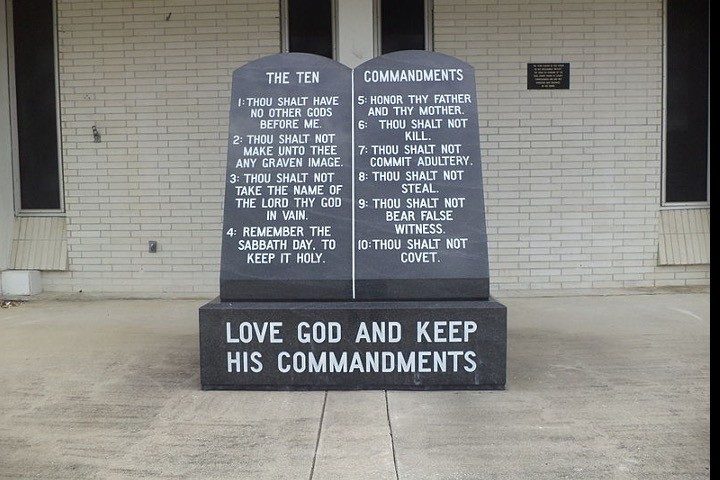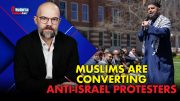
Oral arguments on both sides of a lawsuit brought by a former part-time mail carrier from Pennsylvania will begin tomorrow before the Supreme Court. The decision the high court will render in June could have massive and positive implications for religious freedom in the United States.
Big gates often swing on little hinges. And Groff v. DeJoy might just be one of those little hinges.
Gerald Groff worked part-time for a post office in rural Quarryville, with the understanding that he wouldn’t work on Sundays:
Very simply, I believe that the Lord’s Day, or Sunday, is meant to be a day of rest, and that it’s unique and holy, a day set aside to worship the Lord, and it’s supposed to be a day of rest where we abstain from work.
Over time the population grew, and the post office started delivering packages from Amazon. This put pressure on Groff to violate his religious commitment to not work on Sundays, so he transferred to nearly Holtwood. But eventually pressure came from the postmaster there for him to work on Sundays, and after missing a number of Sunday assignments he was forced to resign.
Three pro-bono law firms filed suit against the U.S. Postal Service on his behalf in 2016, claiming religious discrimination under the 1964 Civil Rights Act, and the case has been wending its way upward through the judicial system ever since.
In January, the high court agreed to accept the case on appeal.
The importance of this case is reflected in the fact that 14 amicus briefs have been filed by religious-liberty advocates, along with 17 state attorneys general and several members of Congress.
It’s important not only in the instant case, where the postal service was unable or unwilling to accommodate Groff’s religious beliefs, but in the way the conjured “wall of separation of church and state” has been twisted to permit the cleansing of all religion, especially Christianity, from the culture.
What’s comforting to believers and frightening to secularists is how the high court’s recent rulings have attacked the very foundation of that perceived “wall.” As Supreme Court Justice Neil Gorsuch wrote in Kennedy v. Bremerton School District last summer:
Here, a government entity sought to punish an individual [high school football coach Joe Kennedy] for engaging in a personal religious observance, based on a mistaken view that it has a duty to suppress religious observances even as it allows comparable secular speech.
The Constitution neither mandates nor tolerates that kind of discrimination.
He expanded:
Respect for religious expressions is indispensable to life in a free and diverse Republic — whether those expressions take place in a sanctuary or on a field, and whether they manifest through the spoken word or a bowed head.
Here, a government entity sought to punish [Kennedy] for engaging in a brief, quiet, personal religious observance doubly protected by the Free Exercise and Free Speech Clauses of the First Amendment.
Robert Tuttle, a law professor at George Washington University, sees the danger that the high court could rule similarly for Groff, widening further cracks in the “wall”:
The major shift in the Roberts court has been a rejection of any kind of separationist doctrine.
That “wall” was erected by far-left Supreme Court Justice Hugo Black, who represented the majority of the high court back in 1947. Writing in Everson v. Board of Education:
In the words of [former President Thomas] Jefferson [in his private letter to the Danbury Baptists in 1802, 13 years after the U.S. Constitution was ratified] the clause against establishment of religion by law was intended to erect “a wall of separation between Church and State”.…
The First Amendment has erected a wall between church and state.
That wall must be kept high and impregnable.
The war against religious influence in the culture was on. In Supreme Court rulings in the early 1970s, state support for books or tuition at religious schools was struck down. A 1980 decision struck down a Kentucky law mandating a display of the Ten Commandments. A 1986 ruling permitted the U.S. military to ban various religious designations (such as a yarmulke for service members in uniform).
The first crack in Black’s wall appeared in the Supreme Court’s ruling in County of Allegheny v. American Civil Liberties Union in 1989. The high court ruled that while a nativity scene in a public courthouse was deemed unconstitutional, a display of the menorah outside the courthouse was constitutional. David Schultz, a law professor at Hamline University, nervously notes:
What has happened over time is that the court, and especially now under Roberts, has shrunk the notions of establishment and coercion.
Recent decisions by the high court hold promise that it will restore to its original intent the purpose the Founders had in adding the First Amendment to the U.S. Constitution.
In Fulton v. City of Philadelphia (2021), the court ruled unanimously against the city’s policy of denying a contract to a Catholic foster care agency that refused, on religious grounds, to offer their services to same-sex couples.
In Carson v. Makin (2022), in a 6-3 ruling, the high court found that religious freedoms were violated by a government that barred recipients of student aid from using that aid to attend a religious school.
In Shurtleff v. Boston (2022), the court unanimously sided with Shurtleff’s group, ruling that Boston had unconstitutionally refused the group’s request to fly a Christian flag on the city’s commons area.
And, of course, the ruling in favor of Coach Kennedy in March continues to reveal the worries of Professor Schultz and others that the high court will not only find in favor of postal carrier Gerald Groff, but signal its intent to obliterate what remains of that “wall” erected so many years ago.
It could signal a time, perhaps soon, when the Supreme Court will rule that prayer and Bibles in public schools are accepted as the norm once again. Following the Kennedy ruling, Professor Schultz expressed his concern about this: a lawsuit in the future “could include a case in which a teacher is allowed to start class with a prayer and students are free to join.”
Such a ruling would mark the beginning of the restoration of the culture which has been so battered and beaten by the phony “wall” adopted by anti-Christian forces in their agenda to remove Christian influence from the culture entirely. Big gates do indeed often swing on little hinges.
Related articles:
Supreme Court Has Another Opportunity to Reverse a Poor Prior Decision



